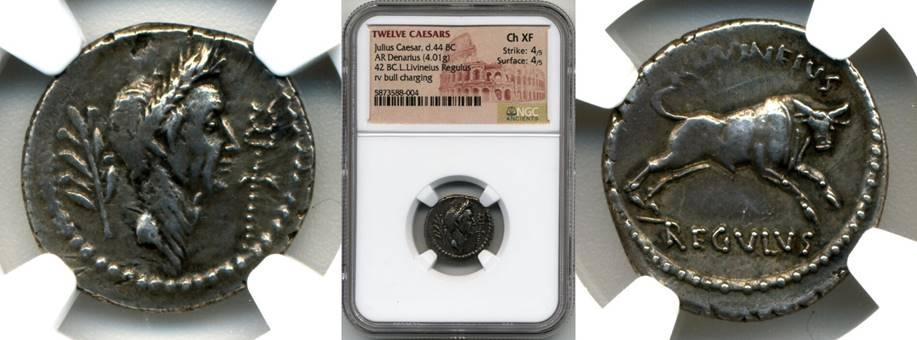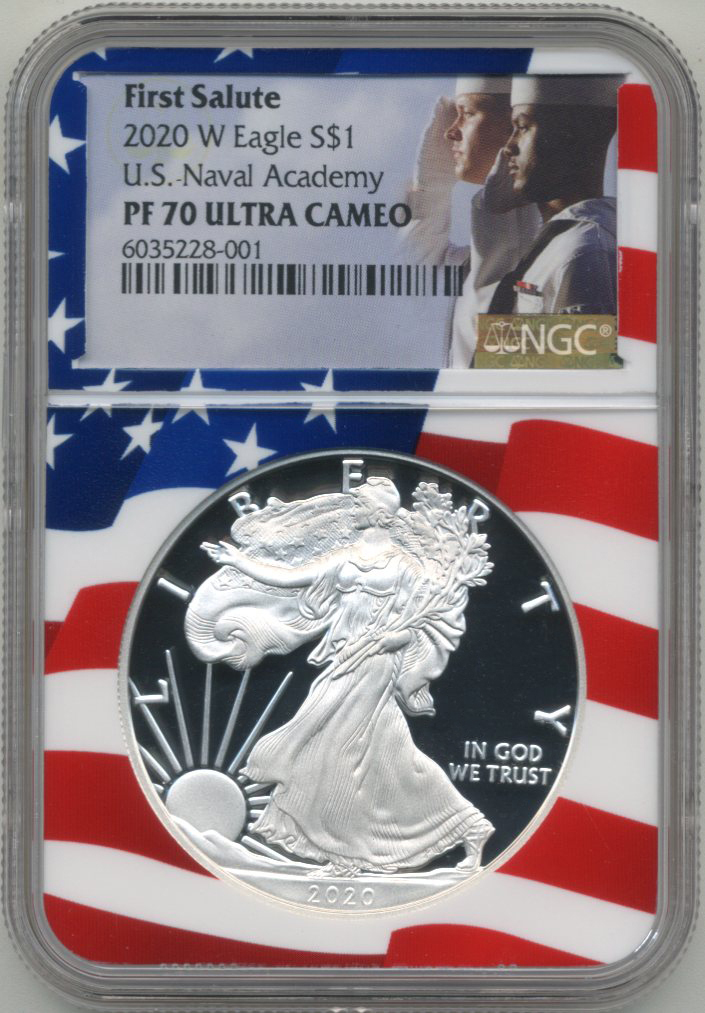44 BC Julius Caesar Silver Denarius

44 BC Julius Caesar Silver Denarius
Portrait Issue, NGC CH XF
Strike 4/5 Surface 4/5
Posthumous Portrait Issue – Julius Caesar Portraits are Much Scarcer than Non-Portrait Types
Obv: Wreathed head of Julius Caesar right; behind, laurel branch; before, winged caduceus.
Rev: L LIVINEIVS above, REGVLVS below, bull charging right. Rare.
Julius Caesar is one of the greatest figures in human history - he amassed one of the largest and most successful armies in the world, and extended Rome’s reach dramatically. He rose to power quickly and his political story is one of the most well-known in history. Making his coins some of the most popular and most desired coins in the world.
A tremendous military leader and a cunning politician he used his power and influence to conquer and assure victory for the Roman Empire. Julius Caesar both divided and united the Empire by engaging in civil war and pursuing Pompey the Great to Egypt. It was there he found that Pompey had been killed by the Egyptian Pharoah. And thus, Julius Caesar engaged in war with the Egyptians and sided with Cleopatra, the Egyptian Queen, thus beginning their affair.
Julius Caesar and Cleopatra would remain in a relationship, despite his marriage, but was deemed as appropriate according to Roman tradition. He would go on to secure a few more major military victories and eventually be declared dictator of the Roman Empire. Attaining absolute power, he cemented his ultimate assassination. He acquired his power and paid the price, made too many political enemies along the way, and ultimately, they conspired to kill him.
It has been proposed that the symbolism behind the laurel branch and caduceus on either side of Caesar's head relate to the peace and prosperity Caesar had hoped to restore to the Roman world by victories over enemies of the state before he was murdered by Brutus. It also relates to propaganda the Triumvirs were promoting as they prepared to confront the leaders of the assassination plot against Caesar.
On the reverse, you will find the text of the moneyer, L. Livineius Regulus, whose father is known to have participated with Julius Caesar in the African campaigns. This surrounds the bull which most probably refers to an event of 47 BC, mentioned by both Dio Cassius and Suetonius, where during the African War, Caesar was performing a sacrifice before the impending battle at Thapsus against the combined forces of Scipio and Juba. During the sacrifice a hawk flew over the Roman Forum, dropping a laurel branch, and the sacrificial bull escaped by swimming across the lake. Soothsayers interpreted this as foretelling the fleeing of Pompey and his followers across the sea, but despite this ominous omen Caesar was not dissuaded from commencing battle.
Of course, this reference to the sacrifice at Thapsus is not the only interpretation of the reverse. The bull also represents the zodiacal sign of Taurus in Venus, and thus we should probably see an allusion to Caesar's claimed divine descent from the goddess Venus.
This is a rare coin with a rich history, both well struck and well centered with great details and an excellent finish. Having both a handsome portrait and the powerful imagery of the bull charging, it will make a wonderful addition to any collection.
For more details of this or other ancient coins call John R. 1-800-301-3868











